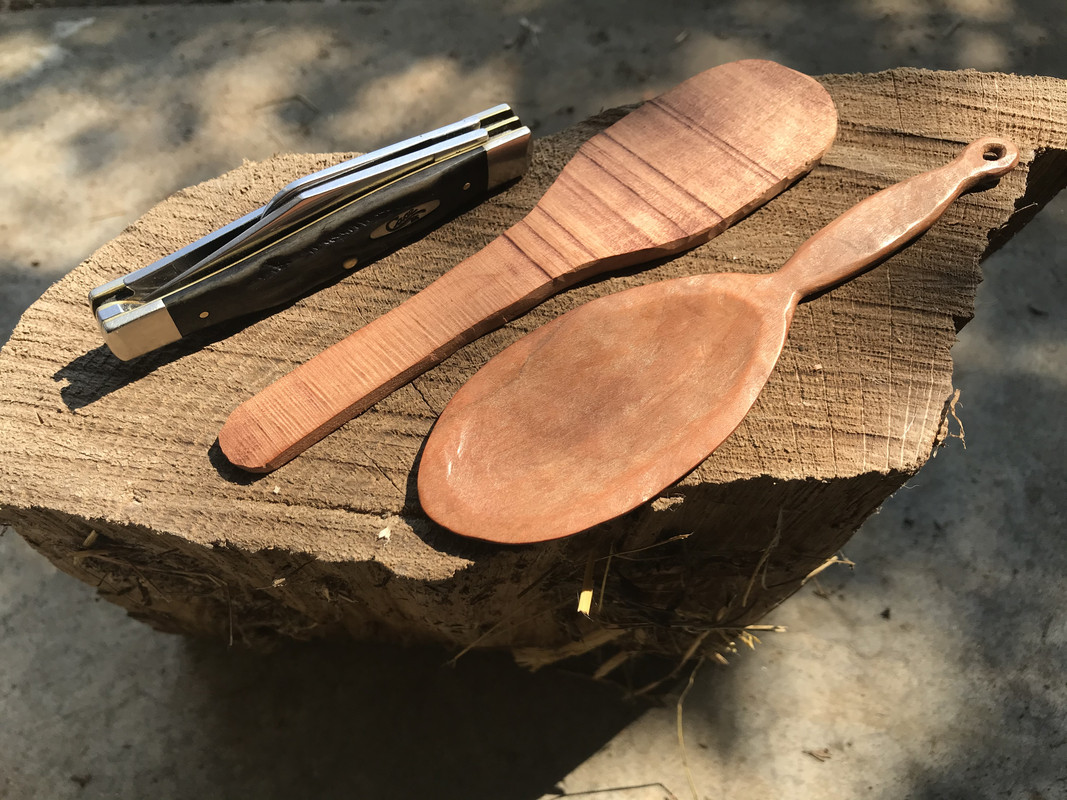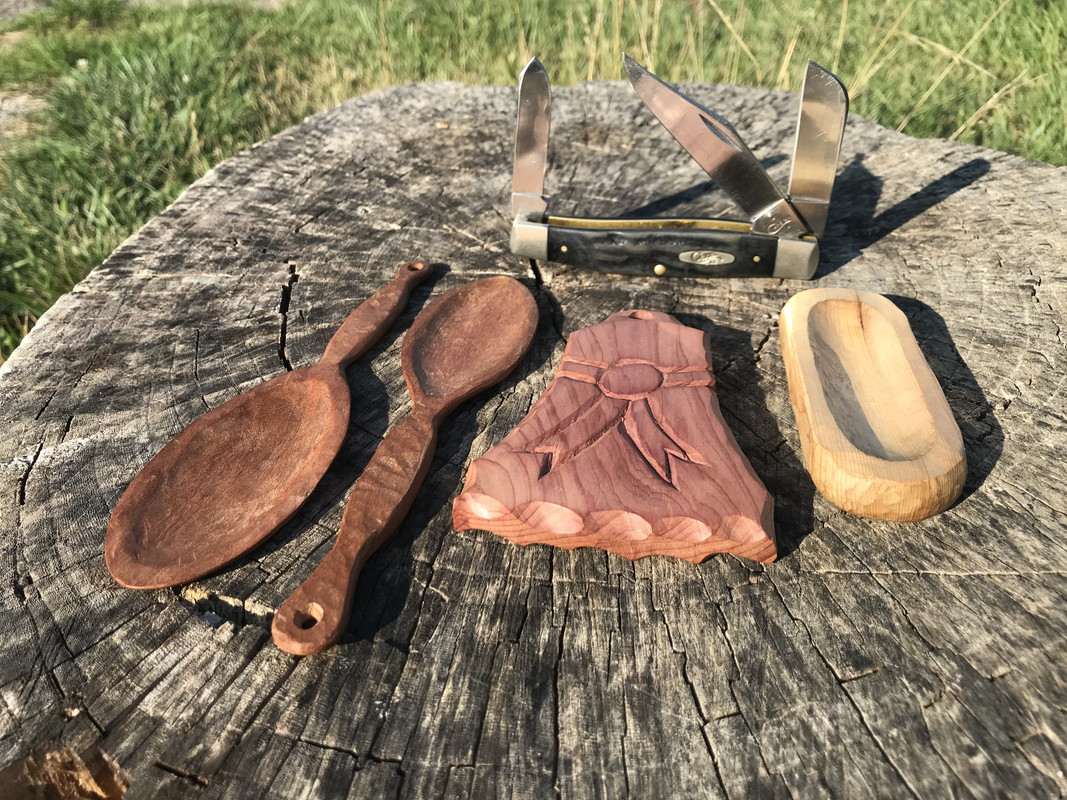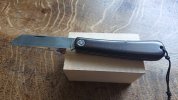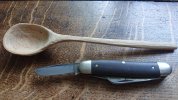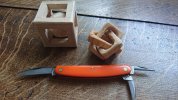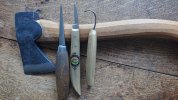- Joined
- Mar 11, 2013
- Messages
- 2,263
On that note. I been wanting to make a shaving horse for some time. I have a drawknife but not a froe. But I really like the old timey woodworking methods. I spose I could make a froe... anyways. I for some reason like the idea of going from log to finished item with only hand tools. It’s more satisfying.I made a wooden utensil for my wifey the other day (not whittled). But the offal was pretty close and I though might as well make a few Christmas ornaments. This is cherry, and the hardest most seasoned piece I ever worked I might add. The completed spoon has paste wax on it.
I thought it’d look cool to have a chipped surface so I did that all over even though I didn’t hew the whole thing with hand tools.
The utensil I made for the wife; well she wanted a spatula thing for ground meat. I started whittling it and my golly that was some solid cherry. So I decided to go after it with the bandsaw and sanders. It turned out real nice. I’ll save it for her birthday I think.

